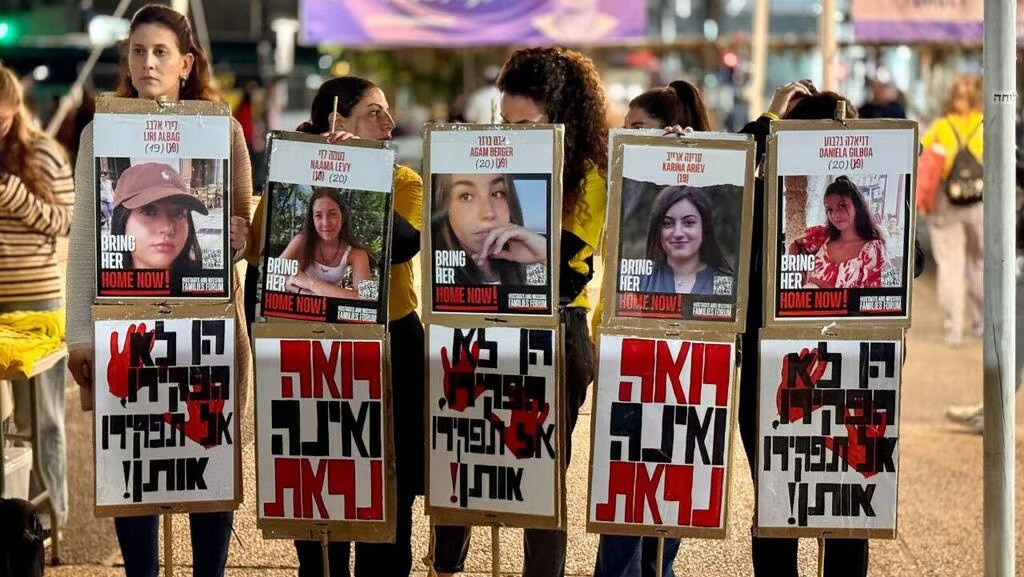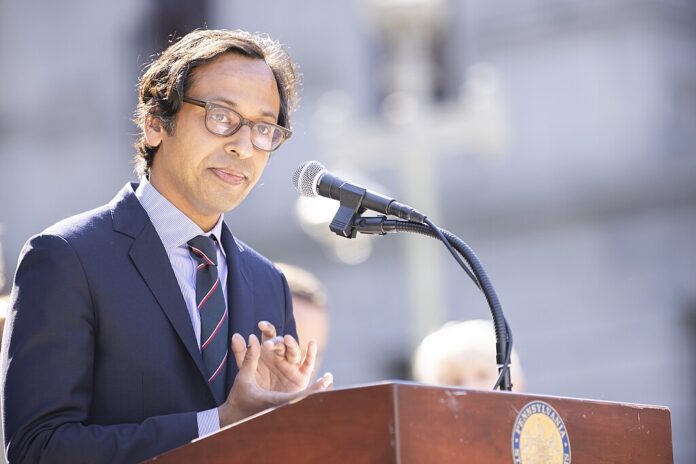The civil year of 2024 is drawing to a close.
For the non-Jewish world, it is usually a time of festive hoopla accompanied by an excess of liquid refreshments, overzealous party celebrations and fireworks. Politicians and media editors, among others, will add in their unsolicited prognostications as to what can be expected in the coming twelve months.
If elections are scheduled in the new year one can guarantee that the outlook will be bright and sunny. If polls have just concluded there will likely be doom and gloom with blame for a disastrous economic situation laid at the feet of a previous administration.
Those unfortunate enough to live in countries where real democracy is merely a mirage will listen to their leaders promising another year of struggle against wicked forces.
Certain themes remain constant.
Unfulfilled aims and objectives are always the fault of nefarious foes. These saboteurs of peace and progress are usually easily identifiable. Coded phrases such as colonialist oppressors, apartheid ethnic cleansers, climate destroyers, genocidal enablers leave no doubts as to which groups these anarchists and rent a mob rioters are referring.
Will 2025 be an improvement on this year?
As far as Israel and the Jewish People generally are concerned, it seems that the signs and omens do not look promising. No amount of optimistic “pie in the sky” mirages or plaintive yearnings for “lights at the end of the proverbial tunnel” can disguise the trends as the world switches years.
True, we pray daily for a time when the world will finally witness peace and justice but until that blessed time arrives it behooves us to be on our guard and prepared for all eventualities.
The latest end-of-year intentions articulated by all and sundry must serve as a guide to what the near future holds.
All hostages held by Hamas must be unconditionally released. That should be the first order of business.
Undoubtedly, one of the top priorities facing Israel and, indeed, all democracies is dealing with Iranian ambitions to achieve nuclear weapons status. It is painfully obvious that Israel cannot rely on the UN or any of its associated bodies to thwart Iranian plans to eradicate the “Zionist entity.” The IAEA has already conceded that Iran is a threshold state and basically has thrown in the towel. Apart from pious pontifications, nobody else is prepared to act.
Biden’s Presidency promised firm action to prevent a nuclear breakout. All that transpired was the release of billions of dollars to the mullah regime. Shooting down a few missiles and drones aimed at Israel does not qualify for any sort of kudos when the root of the poison is not eliminated.
The Houthis, whose terror designation was cancelled by Biden, continue to launch missiles and drones against Israeli civilians. Iran supplies these weapons to them and no doubt is involved in logistical support. Piracy on the high seas continues unabated and the Houthis promise more of the same in the coming year. It is obvious that in the absence of any other meaningful response, Israel will once again have to take action, which in turn will precipitate the wrath of the corrupt UN.
The only potential bright spot on the horizon is the advent on 20 January of the Trump Administration. We can only hope that this will inject an urgent sense of reality and result in those hitherto immune from retribution receiving a very strong message they will greatly regret.
If the declarations of the following suspects are to be believed we are facing a year of continued malign malaise.
The Syrian jihadist rebels who overthrew Assad’s tyranny are being hailed in certain appeasement quarters as the harbingers of a new Arab spring. Those falling over themselves to embrace these groups naturally ignore their stated agenda. In a recent declaration they vowed “that from here to Jerusalem we are coming for Jerusalem. Patience to the people of Gaza.”
We ignore these warning signs at our peril. Not dealing with such threats at the very beginning can be fatal as 7 October 2023 and Hezbollah violations have already proven. The fact that Hamas was one of the first to congratulate the jihadists on “achieving freedom and justice” must surely go down as one of the biggest ironies of the outgoing year.
Abbas, the eternal President of the PA, continues his incitement. No doubt reinvigorated by his Papal audience and benediction, he has ended the year by accusing Israel of “daily massacres, genocide, starvation and expulsions.” Knowing that this diatribe of lies will fall on fertile international ground he then asserted that only by the creation of a Palestinian State will security and stability be achieved in the region.
The Irish Government didn’t need any encouragement to help propagate these falsehoods because it had already decided to demand that the ICJ at The Hague widen its definition of genocide in order to condemn Israel.
Concurrently, the Polish Government announced that it would arrest Israel’s Prime Minister should he dare to visit Auschwitz on the 80th anniversary of its liberation. Symptomatic of the sick state of affairs which now exists is the fact that this bizarre announcement elicited no responses of outrage. Australia, New Zealand and other democracies have already said that they would do the same. These same countries’ leaders then express amazement and fake outrage when outbreaks of hate against Jewish communities take place.
What is being taught in schools and universities and being preached in mosques, all have an important bearing on subsequent actions. In Scotland, for example, it has been revealed that classroom material published by the largest teachers’ union is riddled with hostile depictions of Israel. Is it any wonder therefore that universities eventually become bastions of brainwashed students rioting and inciting against Jewish students and faculty?
Failure to tackle hate against Jews in schools and universities will result in increasingly lethal pogroms in 2025.
Judeophobia of one sort or another has always been an endemic feature of life in Russia. Czarist pogroms, expulsions and exclusions were followed by Communist Stalinist oppression and executions. Judaism was repressed and the study of Hebrew prohibited. Under the Czars, the Russian Orthodox Church was a willing partner in the persecution of the Jews. The fall of Communism raised hopes for a better future and the emigration of Russian Jews to Israel and elsewhere engendered optimism.
Those who warned that there was no future for Jews in countries soaked with Jewish blood were ridiculed as fearmongers. Well, it looks like some old ghosts are once again haunting the Russian political landscape. It was reported this week that President Putin accused Jews of “attacking the Russian Orthodox Church. The Church is being tortured” The oldest trick in the book is to find a convenient scapegoat when policies go disastrously wrong. Historically, the Jews have always been the chosen group and it sounds very much as though history is about to be repeated.
Blaming Jews is not, of course, confined to Russia. The UN Special Rapporteur, Francesca Albanese, declared this week that “countries which continue to support Israel following 7 October are destroying the planet.” There you have it in plain simple language from an official of the UN. No wonder the lunatic mobs run riot worldwide.
It’s the old and ancient canard accusing Jews of being responsible for all evil afflicting humanity.
Right on cue, as it has been for the last few years, is the media reporting about Xmas in Bethlehem. Doom filled reports about the festival being cancelled and the lack of tourists abound. Naturally, the chosen culprits, yet again, are the evil Jews and Israelis. They alone are responsible. In actual fact Bethlehem is now home to only a tiny percentage of Christian Arabs. The majority have been driven out by Islamic extremists. Abbas and the PA may cry crocodile tears but it is their policies which have resulted in a Christian exodus. Unmentioned of course is the fact that Christians in Israel are free from persecution. In Haifa, for example, Xmas celebrations are bigger and brighter than ever now that Hezbollah missiles have ceased falling.
The coming year will no doubt see further unfolding dramatic events.
If past appeasement and hypocrisy are replaced with determined action, the future should look brighter for all who champion freedom, democracy and justice.













